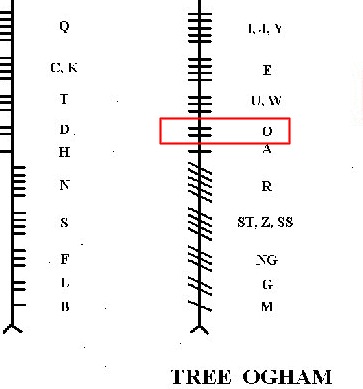By Isabella @TheWandCarver
Instagram: @thewandcarver

I have been saving Gorse for Spring. Yes, I am a week early but I have other plans for that day. Gorse is an ogham tree, but not a Celtic Birth Tree. It is the symbol of the Spring Equinox… the beginning of Ostara/Eostra. Gorse is the second vowel of the ogham and it is called “onn”. There are several folk names for Gorse, but it seems “Furze” is most predominately used. It is a perennial evergreen shrub belonging to the pea family. It forms a much-branched, stunted shrub usually no taller than six feet high, therefore, I almost want to call it an ogham shrub, but it is still considered a tree. The plant’s thorns and its dense habit make Gorse/ Furze an excellent hedging plant. It can also be used as a barrier to protect young tree seedlings in coppices. The thorny nature of the plant means that it is often viewed as having protective powers. In Wales, it was said to guard against witches. The flowers are a deep yellow and have a pungent coconut scent. Although the main flowering period is from March to August, flowers can be found on bushes throughout the year. This lengthy flowering led to the country saying: when the Gorse is out of bloom, kissing is out of fashion.

As well as its use as a hedging material, furze was traditionally gathered into faggots and used as tinder to start fires. In 1864 it was cultivated in Surrey and other English counties especially for this purpose, being popular with bakers to whom it was sold as fuel for their ovens. The bark and flowers produce a fine yellow dye. In Eire the flowers were also used to flavour and add colour to whiskey and the Danes were reputed to use them to make beer. They can also be used to make wine and tea. Flower buds collected and potted with a blade of mace and some peppercorns, in white wine vinegar and salt solution, make a fine pickle.
[Nicholas] Culpepper states in his Herbal, that Gorse was good to open obstructions of the liver and spleen.
“A decoction made with the flowers therof hath been found effectual against the jaundice and also to provoke urine, cleanse the kidneys from gravel or stone ingendered in them.”
Nicholas Culpeper was a seventeenth-century English botanist, herbalist, physician, and astrologer. Published over 350 years ago as a practical health guide, The Complete Herbal (1653), is still the most complete and definitive herbal available today. It contains a rich store of pharmaceutical and herbal knowledge, including herbs and where to find them, herb preparation, plasters, and much more.
Medicinal properties:
There is a Bach Flower Remedy that is given to the hopeless, those who feel they are beyond help or suffer a serious illness. “Greenman Essence of Gorse” helps ease frustration, restlessness, and jealousy, and helps promote emotional security and a feeling of deep inner joy. Edward Bach was an English homoeopath in the 1930s.
Gorse flowers are high in protein and can be eaten raw in salads, made into fruit tea, cordial or syrup. It adds extra flavour and colour to beer, wine or spirits, and a whole range of sweet delights like chocolate and ice cream. The buds can be pickled in vinegar and eaten like capers. Don’t overeat! The plant contains slightly toxic alkaloids.
Gorse has surprisingly few medicinal uses, though its flowers have been used in the treatment of jaundice, scarlet fever, diarrhoea and kidney stones.
Magickal properties:
Herb of Love, Protection against evil. Restoration of Faith, Hope and Optimism. Gathering of Strength. It also attracts gold, so it is used in money spells.
Associated with love, protection, romance, and weddings. Used to further the romance of a consensual relationship. Protects against negativity and dark magick.
Carve the name “Gorse” into a gold or yellow candle. Face east, light the candle, and meditate on the light. Ask for protection, money, love, whatever it has to offer that you desire
In Wales hedges of the prickly gorse are used to protect the home against fairies, who cannot penetrate the hedge.
Correspondences:
Planet: Mercury, The Sun
Element: Fire
Colour: Yellow and Gold
Bird: Cormorant, Harrier Hawk
Stone: Topaz
Deity: Lugh, Celtic God of light and genius
Folk Names: Broom, Frey, Furze, Gorst, Goss, Prickly Broom, Ruffett, Whin
Thy yellow blooms – oh, they to me Are gold and sunshine blent together – Moses Teggart 1908
Many thanks for reading and warmest blessings to all whom this way wander x
Sources:
Culpeper’s English Physician: And Complete Herbal (Classic Reprint) by Nicholas Culpepper
The Bach Flower Remedies, by Edward Bach, 1998 reprint
Druidry.org
Wikipedia.org
